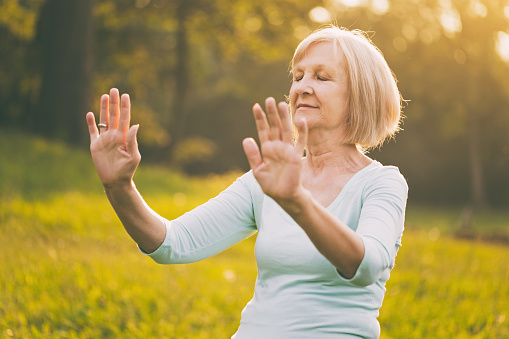Older adults with anxiety or dementia are now benefitting from a system of gentle movements and soothing music initially created to calm children with autism. Called LifeMoves, participants watch videos of people doing simple arm movements in time with music and are encouraged to follow along.
Creation of LifeMoves
Twenty years ago, Roberta Scherf was seeking a way to calm her daughter, Rowan, who has autism. Rowan struggled to interact with other people and to learn, and she was hampered by anxiety. To help, Scherf studied the nervous system and experimented with different movements to see what would help Rowan. What she discovered changed her daughter’s life.
She developed a program called MeMoves, which was released in 2010 and is now used in thousands of school districts in the United States, Canada and elsewhere around the world. It’s also used in therapy centers.
As Scherf developed her program, she first considered already-created disciplines, including yoga and tai chi, ones already known to boost cognitive and physical abilities and to promote a sense of calm. But for her daughter, Scherf needed something simpler — movements that Rowen could do right away. Thus, the debut of MeMoves. About eight years later, the corresponding program LifeMoves was released for older adults.
LifeMoves
The fluid arm movements of this program follow, according to NextAvenue.org, “simple geometric patterns” that “include several different sequences of about three to four minutes each.” As older adults perform them while watching the video and listening to its music, they can observe a “diverse group [of people] including a wide variety of ages — from 18 months to 99 years — all smiling and looking into the camera.” Scherf believes that seeing other friendly people helps to promote a sense of safeness and calmness in older adults, connecting people with one another.
As participants watch, they can make eye contact with the people in the video, each of whom have facial expressions that are loving and non-judgmental. LifeMoves is being tested in senior living communities. Initial feedback is positive, but hard data about its impact on older adults hasn’t yet been released. Professionals who have used this program with their residents note how it works exceptionally well with some people, while other residents don’t necessarily respond to the program.
Specifics of the Program
LifeMoves is organized into three categories:
- Joy
- Calm
- Clarity
Participants can choose from 11 video sequences, imitating the actions they see on screen. The goal is not to perform the movements perfectly or to learn a new skill. In fact, there are no directions or instructions given, and no goals or expectations to meet. Instead, people benefit by simply engaging in the activity. For some, this can mean imitating the movements accurately. For others, it might just involve rocking back and forth in time to the music.
Promotional materials share how this program uses a “visceral ‘bottom-up’ approach to calm the lower brain and activate the parasympathetic nervous system.” This program can be used one-on-one or with groups, and is recommended for use before meals, sleep, therapy sessions and other activities of daily living.
Benefits listed by the company include better self-regulation and increased:
- speech and language
- eye contact
- imitative behavior
- processing ability
- motor skills
- socialization
- organization
- behavior
Decreases in agitation and insomnia have also been observed.










